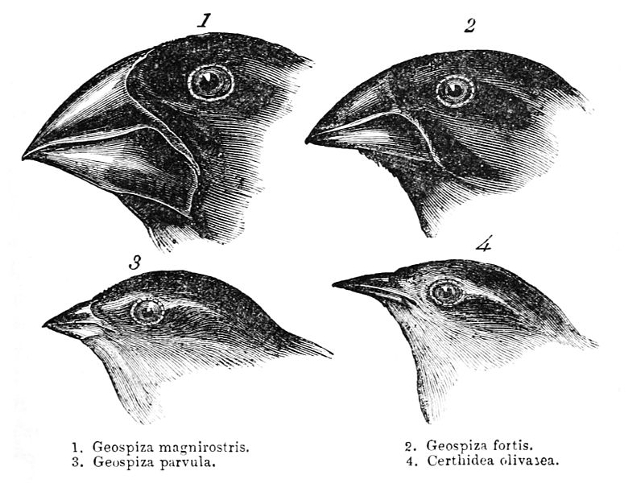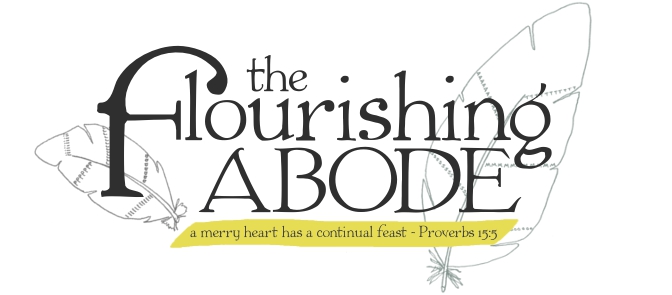I almost started off by referencing “last week’s post” … but since I’m now on the every-other-week schedule for Wednesdays while we are in the process of moving, I guess it was actually two weeks ago! Anyway, in the previous post from this Truth & Evidences series we talked about the problems of where life could have come from in the first place if it didn’t come from a Designer. (If you’re new to this series, you can click here to see that post, or you can click here to see a list of all the previous posts from this series.)
Today we’re going to set aside the problem of how that first cell could have originated and look at the problems associated with getting from some simple life to the amazing and diverse amounts of life we have today. This is what Darwin’s theory of evolution is proposed to explain.
Now, often a person might say, “I don’t believe in evolution”, or of course on the other side – that they do. But really, it’s not all that straightforward. There is more than one kind of evolution, micro-evolution and macro-evolution. I certainly do believe in micro-evolution. Macro-evolution is the one I don’t buy. Here’s the basic difference:

There can certainly be changes within a gene pool – breeders use this to their advantage all the time. But in the end, it may be bigger, smaller, lighter, darker, faster, stronger – but, as in the above example, it is still a sheep. You may be familiar with Darwin’s finches:

On the Galapagos Islands, Darwin discovered these birds, and how their different beaks were adapted to the different tasks each bird needed – some better for cracking seeds, some better for needling insects out of small holes. This was significant in Darwin’s description of natural selection – that animals that best suited for survival were able to generate offspring and pass along their genes. The thing is, though, this is an excellent example of micro-evolution. They are all still finches. It wasn’t that some were observed to have developed a turtle shell or were half-reptile. It was just micro-evolution.
It is the same thing with the experiments scientists do with fruit flies, where they can get a fruit fly to grow extra legs, or have a third wing, and so forth. They are certainly changes … but they are still just fruit flies. And usually not very healthy ones, at that.
Micro-evolution does not prove macro-evolution. You might see some very convincing artists’ renditions of the steps between species, but an artist’s rendition is not proof. We often hear about “the missing link” – but it’s not as if we have the full steps from each species to the next, and there is just ONE piece missing. The missing links are countless. Here is an interesting quote from Gary Parker:
In most people’s minds, fossils and Evolution go hand in hand. In reality, fossils are a great embarrassment to Evolutionary theory and offer strong support for the concept of Creation. If Evolution were true, we should find literally millions of fossils that show how one kind of life slowly and gradually changed to another kind of life. But missing links are the trade secret, in a sense, of paleontology. The point is, the links are still missing. What we really find are gaps that sharpen up the boundaries between kinds. It’s those gaps which provide us with the evidence of Creation of separate kinds. As a matter of fact, there are gaps between each of the major kinds of plants and animals. Transition forms are missing by the millions. What we do find are separate and complex kinds, pointing to Creation.
But what about those photographs we see of a series of skulls leading up from apes to man? Those are actual bones, not just drawings – don’t those show the process of evolution? I’m sure we’ve all seen those charts – with the ape skull on the left and the “modern man” skull on the right, and the in between skulls of neanderthals and so forth. One of the basic problems with this is the very limited definition of “modern man”. Usually what is shown is a very European skull, kind of light bulb shaped. However that is not what all “modern man” skulls look like. For instance, in my family we have very oblong skulls, as you typically see shown in the in-between stages of evolution in those charts. In fact, my dad has measured his skull, and according to the ratios given by scientists for neanderthal skulls, his skull fits into that category. My skull is much the same shape as his .. more oblong and football shaped with a sloping back forehead, I guess I should measure mine! Maybe I would be classified as a neanderthal, too. And the fact is, there is a HUGE variety in skulls of the modern man, vastly different that the European light-bulb shape shown at the end of the chart. Imagine if my skull or my dad’s skull, or some of the many other diverse shapes of skulls were shown at the end of that chart – it wouldn’t look like such a smooth transition any more, would it? If we can have neanderthal skulls today .. why couldn’t mankind have also had neanderthal skulls in the past?
Changes in appearance within one species (micro-evolution) is a completely different thing than changes from one species into something different (macro-evolution). Micro-evolution does not prove macro-evolution.
Leave your thoughts and comments below, I love to hear from you!


“Micro-evolution does not prove macro-evolution.”
And yet…most evolutionists seem to do just that, however flawed the logic in doing so.
You write so clearly on this subject – I am enjoying your series, even if I don’t comment.
(Bad reader! Bad, bad!)
Oh, thanks, Bobbie! I appreciate it! And thanks for commenting … though you’re certainly not a bad reader if you don’t, haha ;)
You say that you believe in micro-evolution but not macro-evolution, but how do you distinguish between the two? What do you think prevents micro from becoming macro? We know genetically that the differences between species is fundamentally the same as the differences you accept in micro-evolution, but with more accumulated, so what would stop them from accumulating?
I think the difference between the two is fairly clear – one is changes on a much smaller level within a certain type of animal … the other is changing from one animal into another. As far as what prevents micro from becoming macro – breeding animals to cause their attributes to be more distinguished (for instance, breeding a dog to be smaller) is working with genes they already have – trying to get a dog to have a turtle shell, though, you need some major changes to the DNA. Where would that come from? Mutations are almost always harmful and not always able to be inherited. And changes that happen in the life-time are not inherited. As far as the genetic differences between species being the same as within a species (micro-evolution)… at what level? Obviously not completely, or any species would be able to mate with any other species if the genetic differences were only as different as within a species. I understand you’re saying it’s more accumulated changes – but I think that is where the issue is. What would stop them from accumulating is the limits of that species’ DNA. Plus, the sheer amount of time it would have taken – and all the grotesque mutated forms (because it wouldn’t have been a completely smooth process) … why wouldn’t there be more signs of this in the fossil record?
The fossil record is spotty because of the remarkable turn of events it requires to produce a fossil.These circumstances often involve tar pits, volcanic ash, or landslides.
Under regular circumstances, human remains will decompose in a period of 6-15 years.
“Regular” being burial as we know it today.
Many cultures have a history of cremation after burial, which would negate the ability to procure fossils.
At some point, we would have to assume that creatures capable of human-like culture would understand the dangers of tar pits, volcanoes, and treacherous rocky overhangs.
But it’s not just the fossil record for humans, it’s of animals as well. I do understand that by far most things do not get fossilized, and that it takes unusual circumstances. However, for macro evolution to have happened there should have been all kinds of inbetween stages of all kinds of animals. The chances that only the delineated animal “types” would have been fossilized, when there would have been far more “missing links” that developed, would be astronomical.
I think an example of the macro-evolution you’re talking about is best illustrated with the dinosaur to bird theories. There are lots of interesting studies about on the whether that really is the most likely or if perhaps it was even vice versa but regardless, this one would clearly be on the macro level.
Very true, that would definitely be macro. Thanks for stopping by Amy. :)
Hi, I just wanted to say that this article (or blog or whatever-you-call-it; I’m not too great at computer stuff) really inspired me.I’m a middle school student and this is when they start piling on the “Macro-evolution happened and Creation didn’t. This is what the everyone says and its a fact.” stuff. So thanks for being such a GREAT help! : )